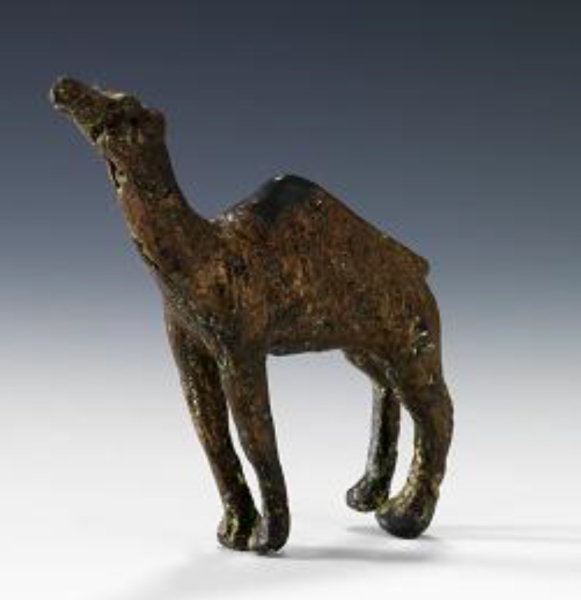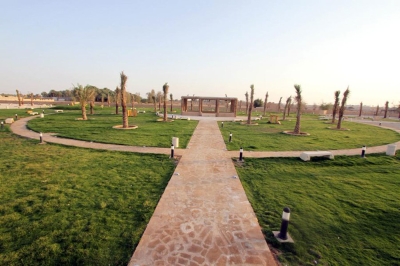
The Small Camel Figurine was found in the archaeological Qaryat al-Faw, which is located at the intersection of Wadi ad-Dawasir and the Tuwaiq Mountains range, along the ancient trade route, on the edge of al-Rub' al-Khali (Empty Quarter), southeast of Wadi ad-Dawasir Governorate, Riyadh Province, Kingdom of Saudi Arabia.
Specifications of the figurine
The small camel figurine is made of copper, with a severed tail, a small hump, a narrow abdomen, a raised neck, and straight legs and arms. Its head is raised, with some details visible. There are two holes at the bottom of the abdomen, likely it was affixed by them. Additionally, an inscription in the ancient South Arabian Musnad script is engraved on one of its sides, which reads as follows:
Baa, Noon Waaw, Daal Haa, Noon, Yaa, Dhaal Seen, Meem, Waaw Seen, Meem, Ayn, Laam, Haa
Dimensions of the figurine
Height: 8.9 cm.
Neck circumference: 3.3 cm.
History of the figurine
The small camel figurine dates back between the third century BCE and the third century CE and was used for funerary purposes.
The figurine is preserved at the Museum of the Archaeology Department at King Saud University in Riyadh City and is registered under number 249 Q 6. The discovery of the small camel figurine is one of the outcomes of the archaeological survey and excavation work conducted by the antiquities and museums sector in Saudi Arabia over recent years, as part of the efforts of Saudi archaeologists, scientific missions, and specialized research teams.
The figurine at the Louvre Museum
The small camel figurine was one of the archaeological pieces selected to participate in the Saudi Archeological Masterpieces Through the Ages Exhibition, held at the Louvre Museum in the French capital, Paris, in 2010. The exhibition featured three hundred pieces of different materials and eras. They are original artifacts from different regions of Saudi Arabia, classified into three historical groups: Pieces from the prehistoric ages, pieces from the pre-Islamic period, and pieces from the Islamic eras.
Related quizzes
Related articles

